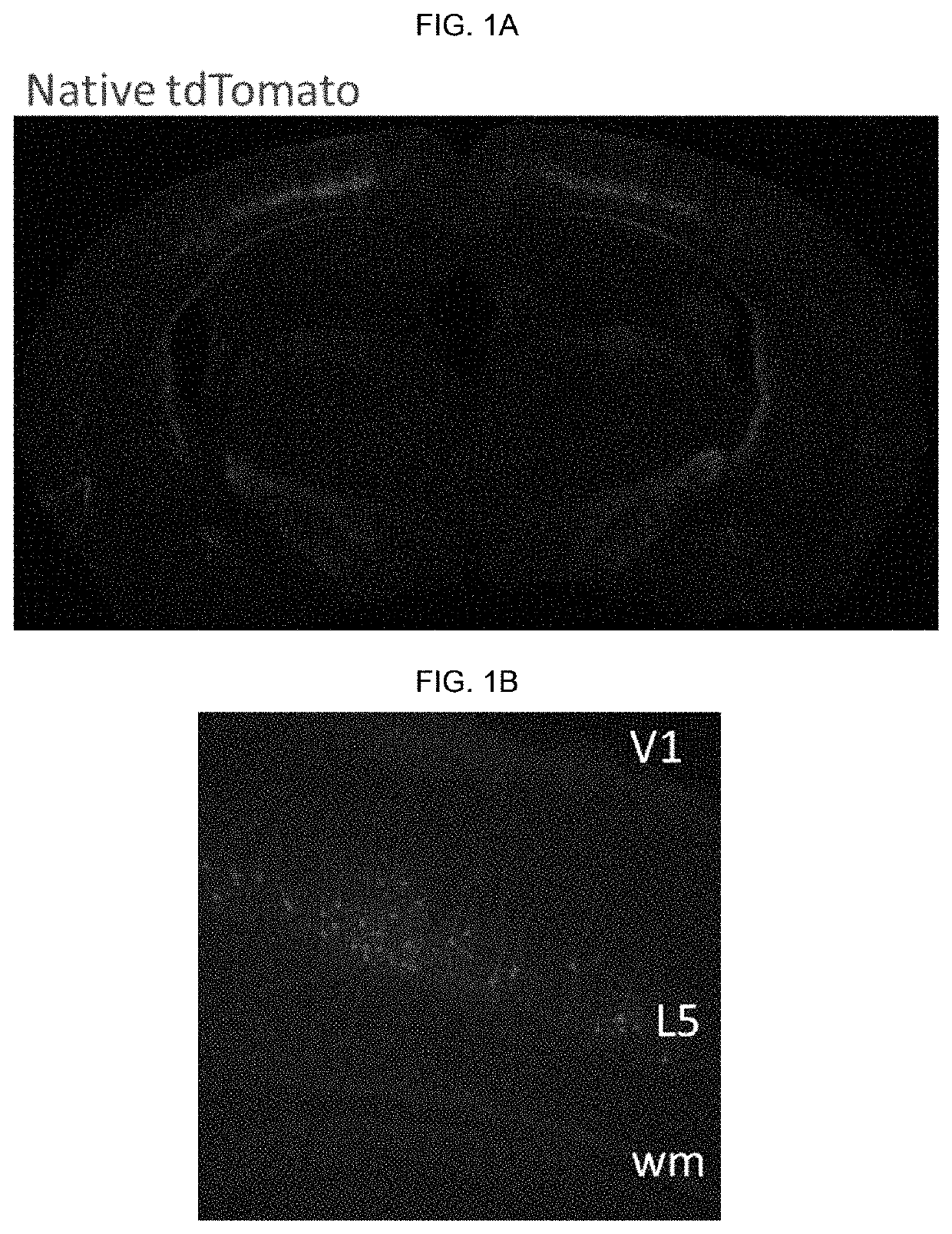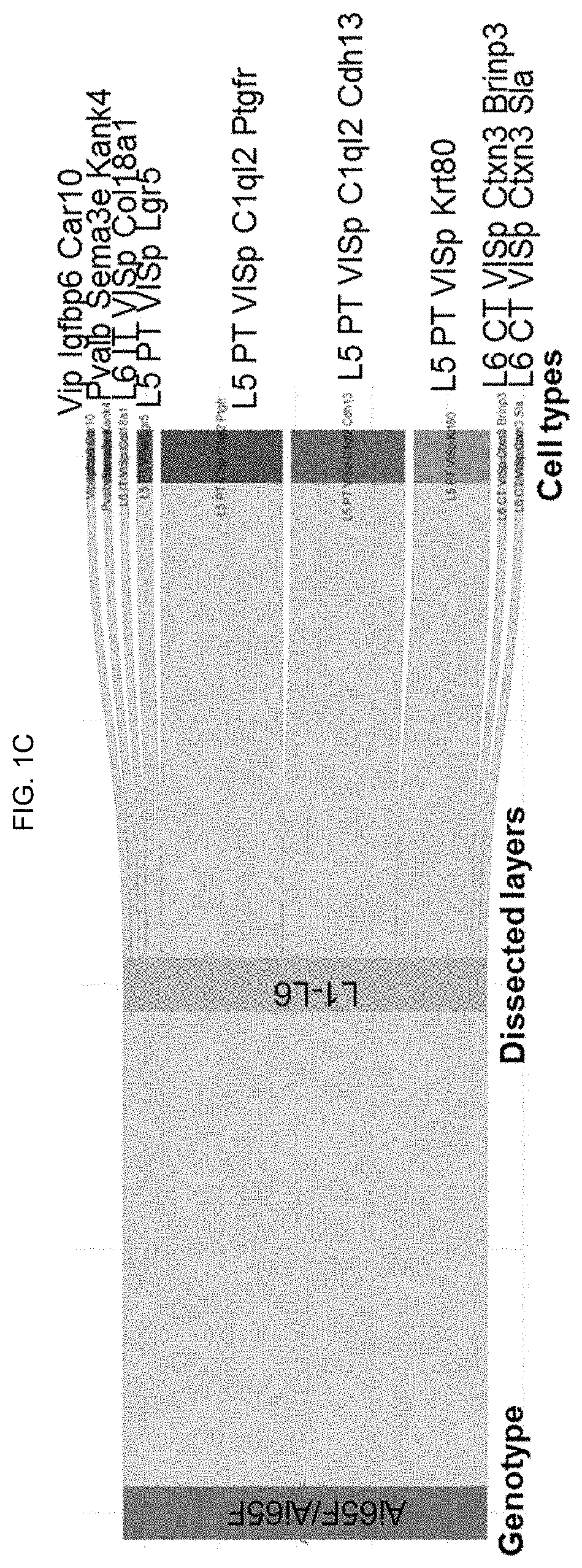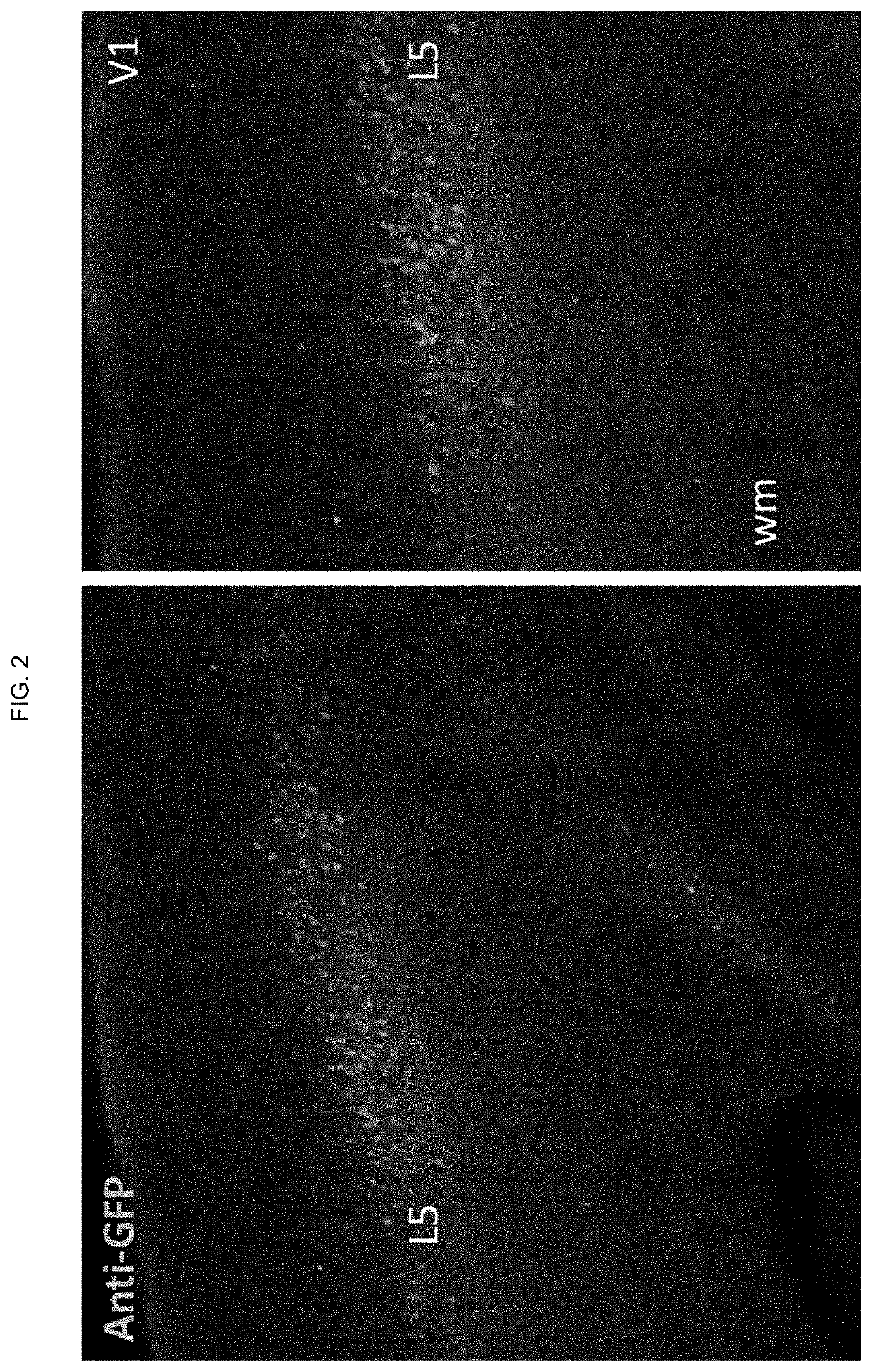Artificial expression constructs for selectively modulating gene expression in excitatory cortical neurons
a technology of excitatory cortical neurons and artificial expression constructs, which is applied in the field of artificial expression constructs for selectively driving gene expression in excitatory cortical neurons, can solve the problems of low frequency of experimental animals, high cost of such lines, and inapplicability to humans, so as to reduce the size of the required number and ensure the effect of sequence length
- Summary
- Abstract
- Description
- Claims
- Application Information
AI Technical Summary
Benefits of technology
Problems solved by technology
Method used
Image
Examples
embodiment 1
2. A concatenated core of embodiment 1, wherein the core is selected from SEQ ID NOs: 29, 177, and / or 178.
3. The concatenated core of embodiment 1 or 2, wherein the concatenated core includes 2, 3, 4, 5, 6, 7, 8, 9, or 10 copies of SEQ ID NOs: 29, 177, and / or 178.
embodiment 3
4. The concatenated core of embodiment 3, including 3 copies of SEQ ID NO: 29.
embodiment 4
5. The concatenated core of embodiment 4, including SEQ ID NO: 30.
6. The concatenated core of embodiment 3, including 3 copies of SEQ ID NO: 177.
PUM
| Property | Measurement | Unit |
|---|---|---|
| fluorescent | aaaaa | aaaaa |
| time | aaaaa | aaaaa |
Abstract
Description
Claims
Application Information
 Login to View More
Login to View More - R&D
- Intellectual Property
- Life Sciences
- Materials
- Tech Scout
- Unparalleled Data Quality
- Higher Quality Content
- 60% Fewer Hallucinations
Browse by: Latest US Patents, China's latest patents, Technical Efficacy Thesaurus, Application Domain, Technology Topic, Popular Technical Reports.
© 2025 PatSnap. All rights reserved.Legal|Privacy policy|Modern Slavery Act Transparency Statement|Sitemap|About US| Contact US: help@patsnap.com



